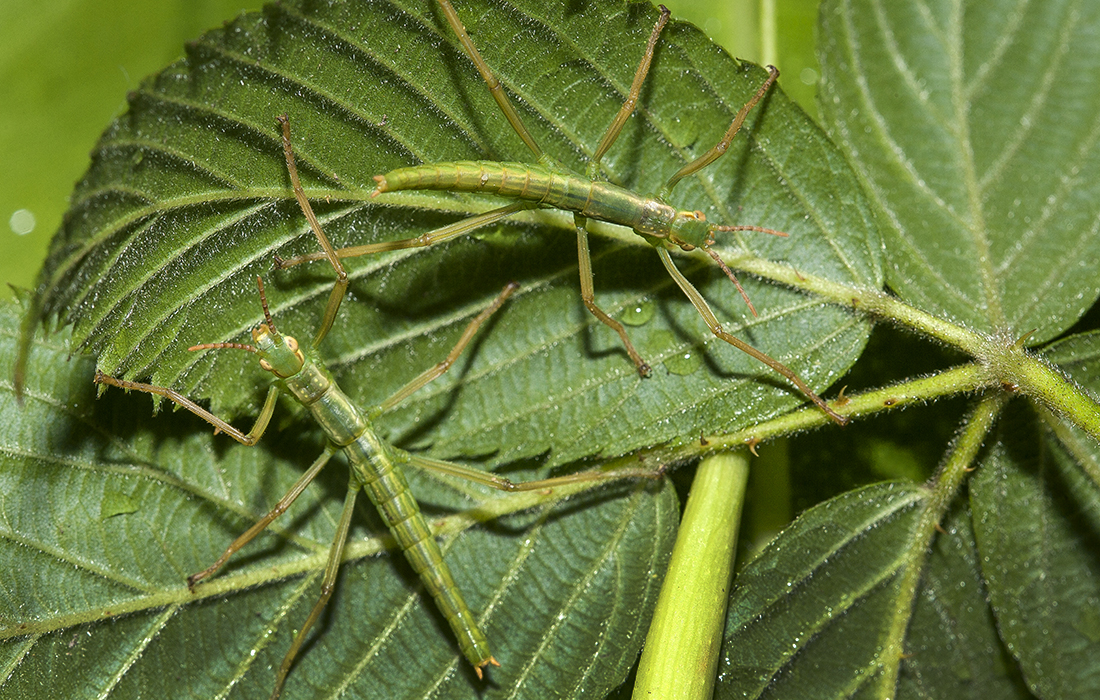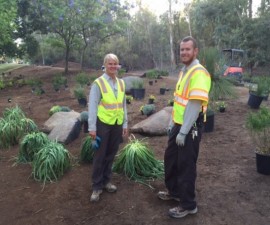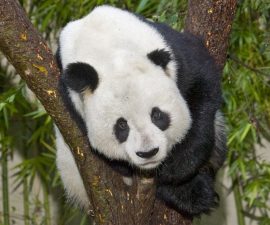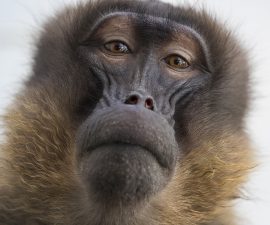The critically endangered Lord Howe Island stick insect’s population is now growing at the San Diego Zoo—and more hatchlings are expected soon.
BY Eston Ellis
Photography by Ken Bohn
Videography by Victor Schwanke
“Lord Howe” is not a question. But still, you might be asking yourself “how?”—against all odds—the remarkable Lord Howe Island stick insect Dryococelus australis has managed to survive.
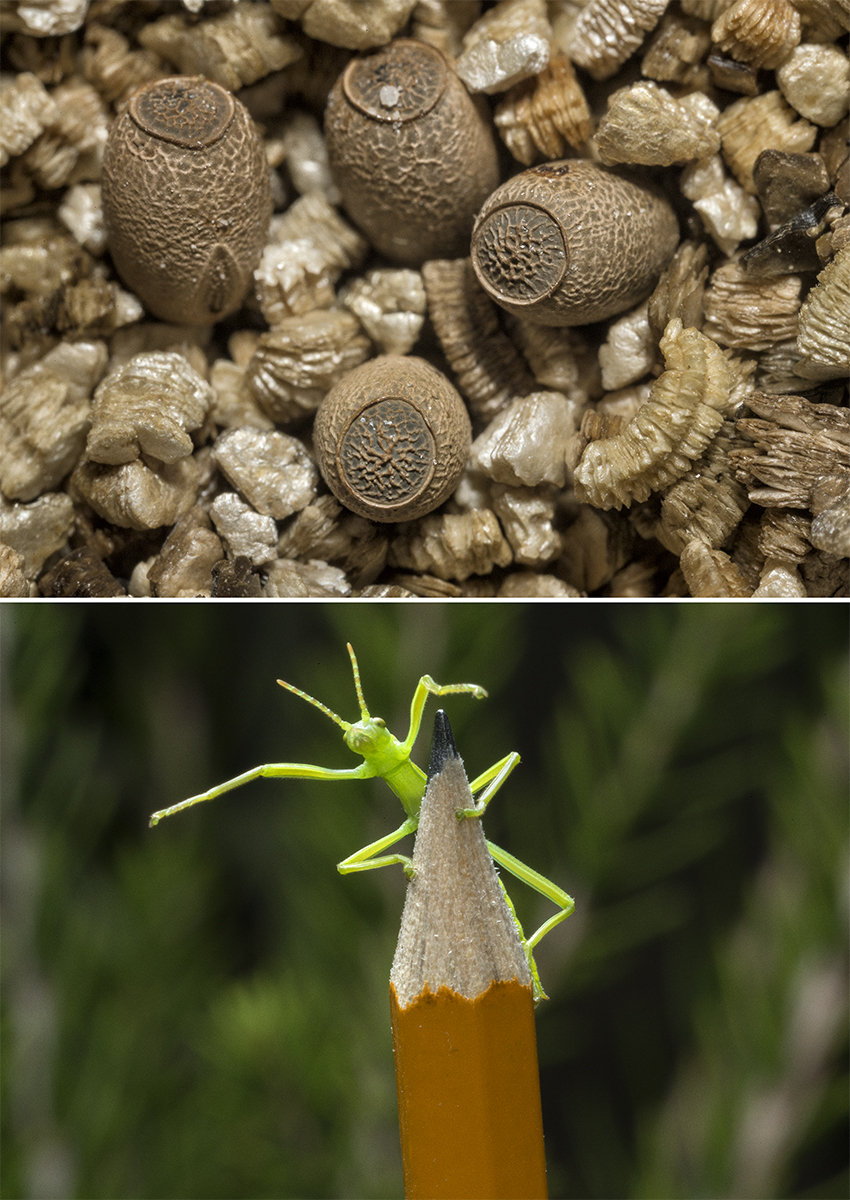
STARTING SMALL
Lord Howe Island stick insects start out as pencil-eraser-sized eggs (top), from which tiny green nymphs emerge (bottom).
Sometimes called “tree lobsters,” these critically endangered stick insects grow up to seven inches long when they are mature. Hatching from pencil-eraser-sized eggs that look something like tiny root beer barrels, they start out as bright green nymphs that are diurnal (active in the daytime) and blend in with the color of the vegetation they feed on. They gradually turn brownish-black as they mature and grow larger, and they also become nocturnal. They are known to cling to each other in large, living clusters, enjoying these “group hugs” inside hollow logs. It is no wonder they hold onto each other: few representatives of their species remain on the planet.
Not one is left in the wild on the island that gave this species its name. They were eaten by black rats, which invaded Australia’s remote Lord Howe Island after a 1918 shipwreck, and the stick insects were assumed to be extinct until the dawn of the 21st century.
FOUND ALIVE
In what sounds like a miracle, the last group of Lord Howe Island stick insects were discovered in 2001, clinging to life on a melaleuca plant growing on a steep, jagged 1,845-foot-high rocky outcropping called Ball’s Pyramid—which juts out of the Pacific Ocean about 14 miles off the coast of Lord Howe Island, located between Australia and New Zealand. During a specially permitted expedition to the protected rock in 2003, scientists collected two male and two female stick insects. Two went to a private breeder, and two were taken to the Melbourne Zoo, to participate in a breeding program to build assurance colonies for the species. The project was successful, and the program expanded to eventually fill four greenhouses with Lord Howe Island stick insects, raised in managed care. The Melbourne Zoo’s breeding program raised its 12th generation and celebrated its 13,000th hatchling in 2016; about 600 individuals are kept there today.
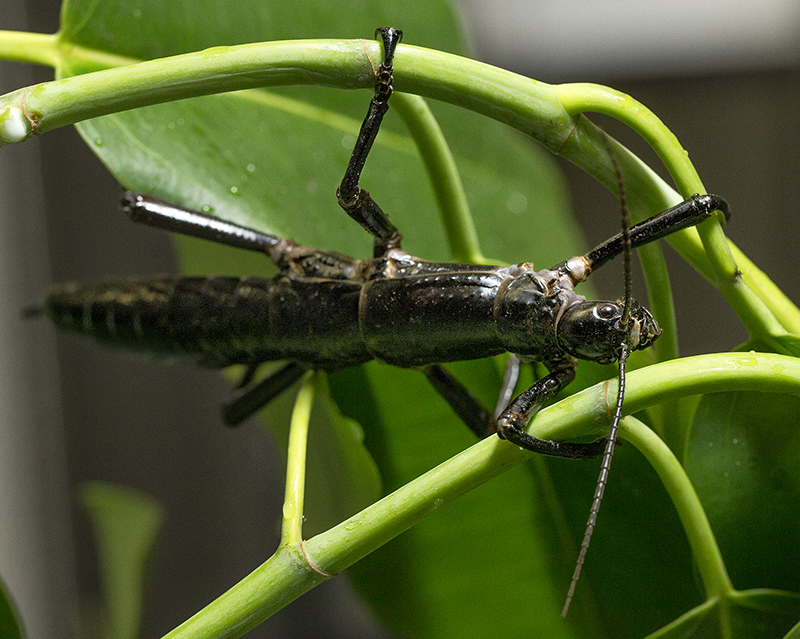
GROWING STRONG
By the end of 2016, the San Diego Zoo had raised 31 adult males and 38 adult females, and these adults produced 1,257 eggs—the first Lord Howe Island stick insect eggs laid in North America.
By 2012, the Melbourne Zoo was ready to expand the breeding program by taking on partners. The San Diego Zoo stepped forward with a plan to start the first Lord Howe Island stick insect assurance colony in North America. While the program seemed to be a perfect match for the San Diego Zoo, in helping to bring back a species that had all but gone extinct, there would be many challenges ahead.
“We had many of the insects’ proven host plants on Zoo grounds,” explained Paige Howorth, associate curator of invertebrates at the San Diego Zoo. “We also had extensive experience with numerous other species of stick insects, so we felt confident in our ability to support this species. To our surprise, it turned out to be a very challenging stick insect to raise.”
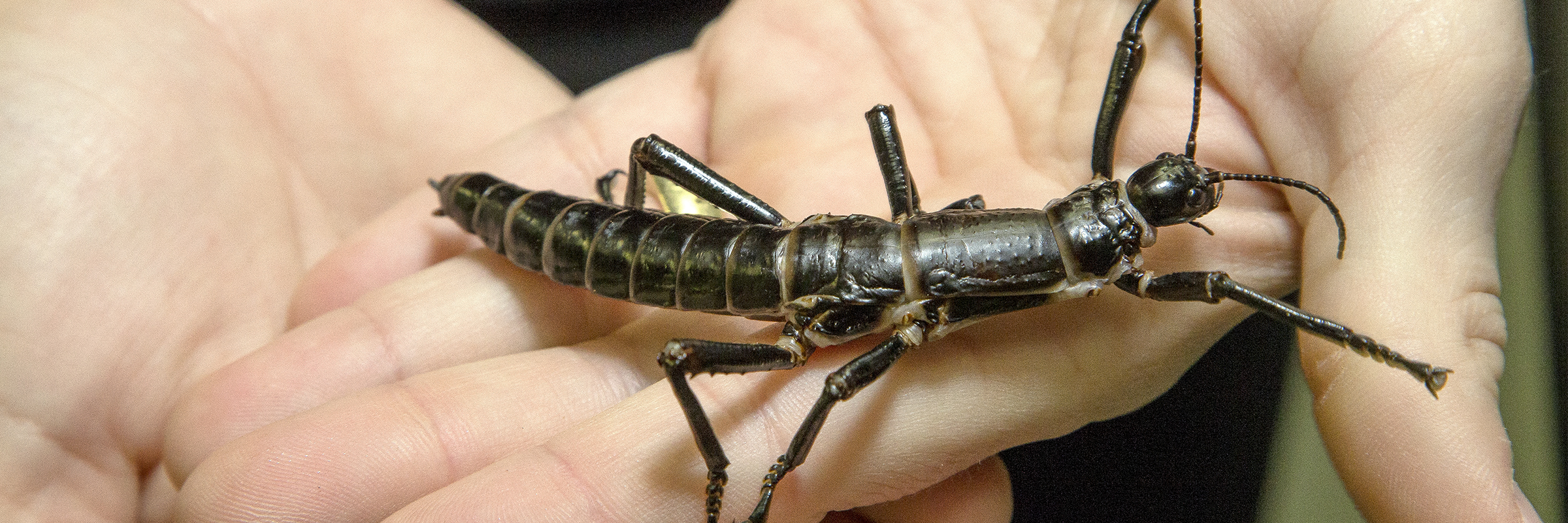
RAISING HOPE
The first attempt to raise Lord Howe Island stick insects in San Diego was not successful. One of the host plants that the adult insects feed on, Moreton Bay fig Ficus macrophylla, is plentiful at the San Diego Zoo but was not appetizing to juveniles of the species.
At that point, the team decided to send senior horticulturist Seth Menser on a quick trip to Australia, to collect seeds and cuttings of two important host plants that were unavailable in North America. He brought back Lord Howe Island melaleuca Melaleuca howeana—the plant that was being used as a host plant at the Melbourne Zoo.
The horticulture team was able to grow this variety of melaleuca by grafting some of the cuttings onto another species of melaleuca; planting a second batch of cuttings in soil, with the use of an agent to encourage root growth; and growing a third batch in the tissue culture lab at the Zoo. After all three methods worked, the efforts resulted in plants growing in six different plots. “Unfortunately, it is a slow-growing plant,” Paige said. “But after 4½ years, we now have 150 plants that can withstand harvesting.”
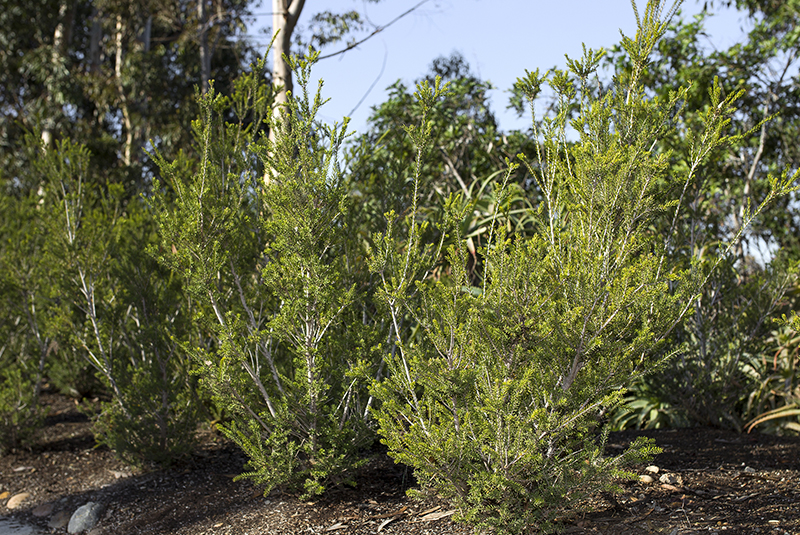
FOOD FROM HOME
The San Diego Zoo now has 150 Lord Howe Island melaleuca Melaleuca howeana plants—the Lord Howe Island stick insect’s preferred host plant—grown from seeds and cuttings brought back from Australia.
While the young Lord Howe Island stick insects needed their native melaleuca and tree lucerne, the adults can do just fine with other host plants. “We have one of the main adult host plants: Moreton Bay fig, which is the same variety as the big fig tree in front of the San Diego Natural History Museum. We also have an orchard of tree lucerne growing in the Elephant Odyssey area,” Paige explained.
In addition, many other suitable host plants are available for the stick insects at the Zoo. “They will accept wooly tea tree Leptospermum lanigerum—in fact, they like that a lot—and pink melaleuca Melaleuca nesophila,” Paige said. “Because of our fantastic climate and the diversity of the botanical collection and browse program at the Zoo, we are able to offer these animals a lot of choices.”
“Insect husbandry is more difficult than it seems: there are many unknowns,” Paige added. “Often, methods that have been applied successfully at other institutions just don’t work at yours. It’s important to be creative and methodical to find the right approach.”
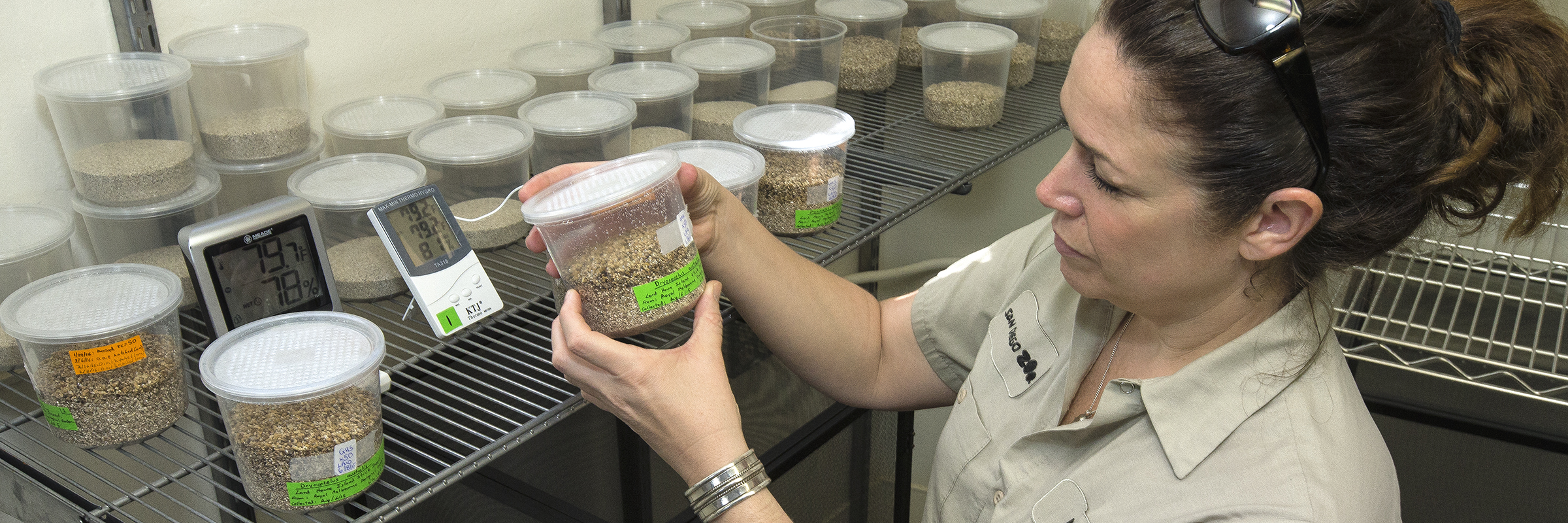
Eggs on a Plane
In January 2016, Paige traveled to the Melbourne Zoo and brought back a batch of 300 Lord Howe Island stick insect eggs—which she carried with her on the long flight back to San Diego. The tiny eggs sat in a bed of vermiculite, insulated and waiting to hatch.
The eggs have a six- to nine-month incubation period, and they had already started incubating at the Melbourne Zoo. About 100 were expected to hatch within 3 weeks after the eggs’ arrival in San Diego. “Then we had a few weeks to catch our breath before the next batch started hatching,” Paige said. There is a significant mortality rate at the hatchling stage, so rearing large numbers is important to balance the loss.
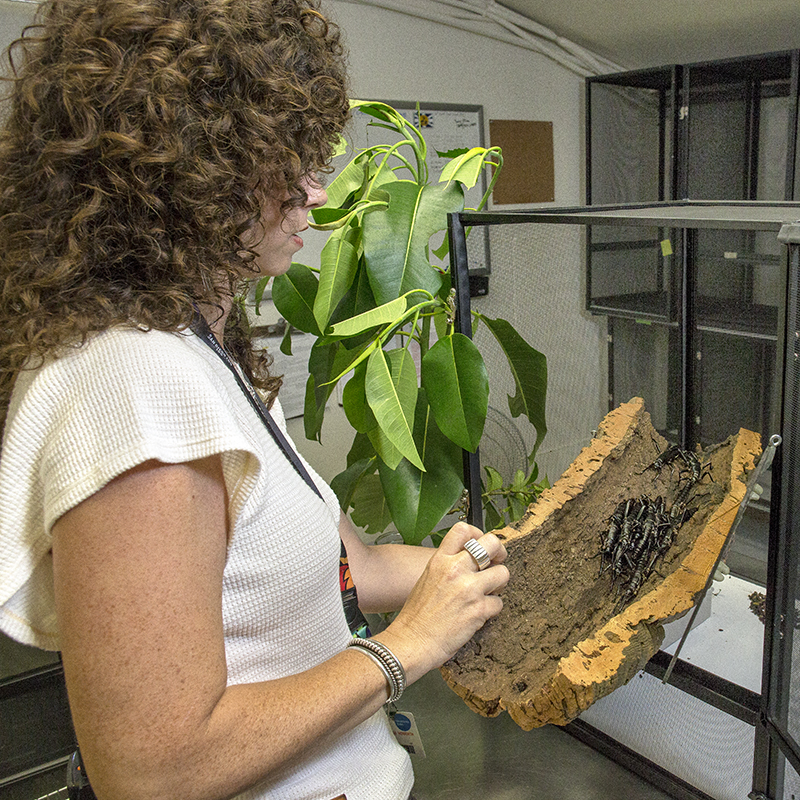
A PLACE TO GROW
Lord Howe Island stick insect eggs and adult insects are maintained in an off-exhibit area at the Zoo, where temperature and humidity can be carefully controlled.
At the Zoo, Lord Howe Island stick insects are housed in their own 15- by 17-foot room, separate from other invertebrates. The room is completely sealed, with an air exchanger pushing in fresh air several times a day. Humidity is closely controlled, kept at levels from 70 to 90 percent, depending on the life stage of the insects. For example, nymphs require very moist air, with 90 percent humidity.
“Our goal is to hit the sweet spot, with super-high humidity and lots of air exchange,” Paige said. Every change in the enclosure’s conditions, no matter how slight, is monitored—and Paige is kept informed with automatic emails and texts. “The alarm system in the rearing room provides 24-hour access to the conditions of the room, and sends alerts when any parameter is out of range. There have been times where I have needed to check in on them at inconvenient times—but the alarm system never sleeps!”
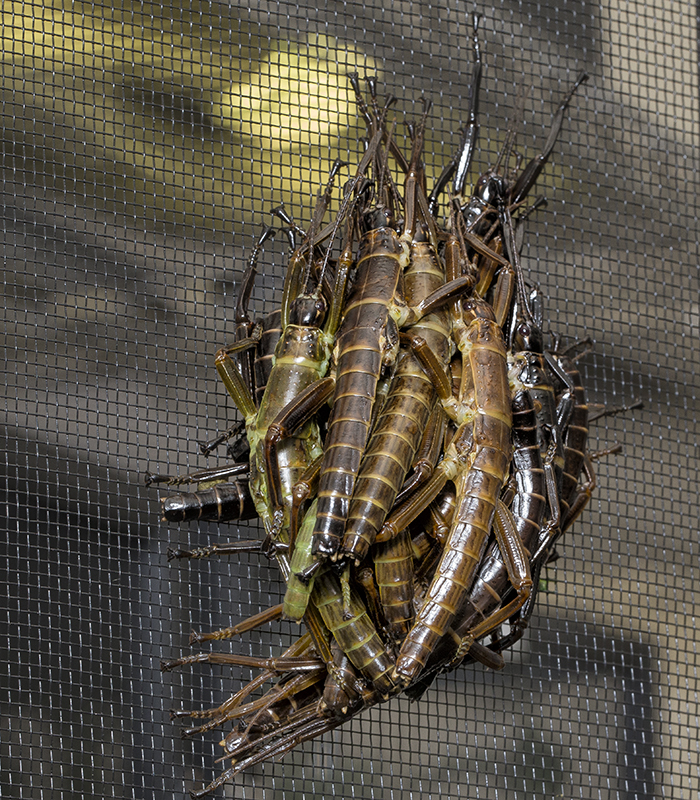
GROUP HUG
A group of juvenile Lord Howe Island stick insects clings together in a characteristic cluster.
All of that attention to the Lord Howe Island stick insects’ continued comfort and well-being resulted in some of the Australian eggs that arrived in January 2016 turning into healthy hatchlings, which quickly grew from small, green nymphs into large, brownish-black adults. By December 2016, the Zoo had 31 adult males and 38 adult females, and these adults produced 1,257 eggs—the first Lord Howe Island Stick insect eggs laid in North America. The eggs are expected to begin hatching this month (March 2017). “We have the potential to see our assurance colony expand to 200 to 250 individuals,” Paige noted.
Partner zoos currently participating in Lord Howe Island stick insect breeding programs include Bristol Zoo Gardens in Bristol, England, which hatched 38 eggs in January 2016, and Canada’s Toronto Zoo, which is just starting its program. Plans are in the works to launch similar programs at zoos worldwide. “Our ultimate goal is to not only create a robust assurance colony at the San Diego Zoo, but to recruit domestic partners for this vital project,” Paige said.
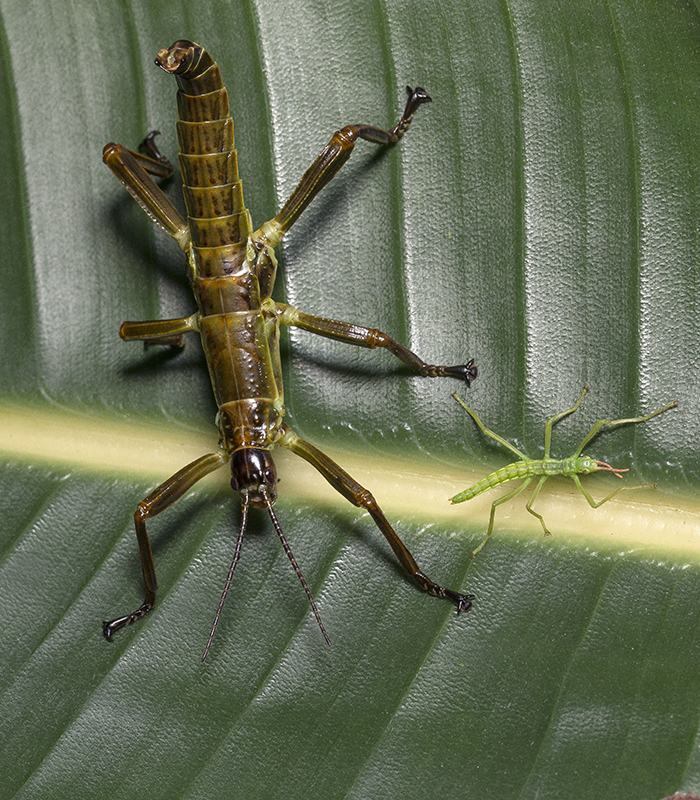
BIG CHANGES
As Lord Howe Island stick insects grow larger, they also grow darker—gradually turning brownish black.
Melbourne Zoo has been working with residents of Lord Howe Island, to educate them about the species that once thrived in their community, Paige said. Lord Howe Island stick insects are back on the island in limited numbers, at an Education Center—in enclosures maintained in cooperation with island biologists—and Melbourne Zoo will be ready to help out with resources whenever local residents are ready to reintroduce the species. Before that happens, a rat eradication program would be needed on the island, to ensure that the stick insects do not once again become rodent food.
Meanwhile, the San Diego Zoo’s Lord Howe Island stick insect project continues, and the hatching of the latest batch of eggs is eagerly anticipated. “The project is a good example of how we’re working to end extinction—for all types of animals, not just the cuddly ones,” Paige said.
“This has been a great international collaboration, with some very talented individuals at the Melbourne Zoo—and at the Bristol Zoo and the Toronto Zoo,” she added. “I especially want to recognize the Melbourne team, both past and present, because what they have done is so inspiring. The Lord Howe Island stick insect may only exist today because people stepped in to help it survive. It was, literally, just ‘hanging on’—on the steep side of Ball’s Pyramid.”

